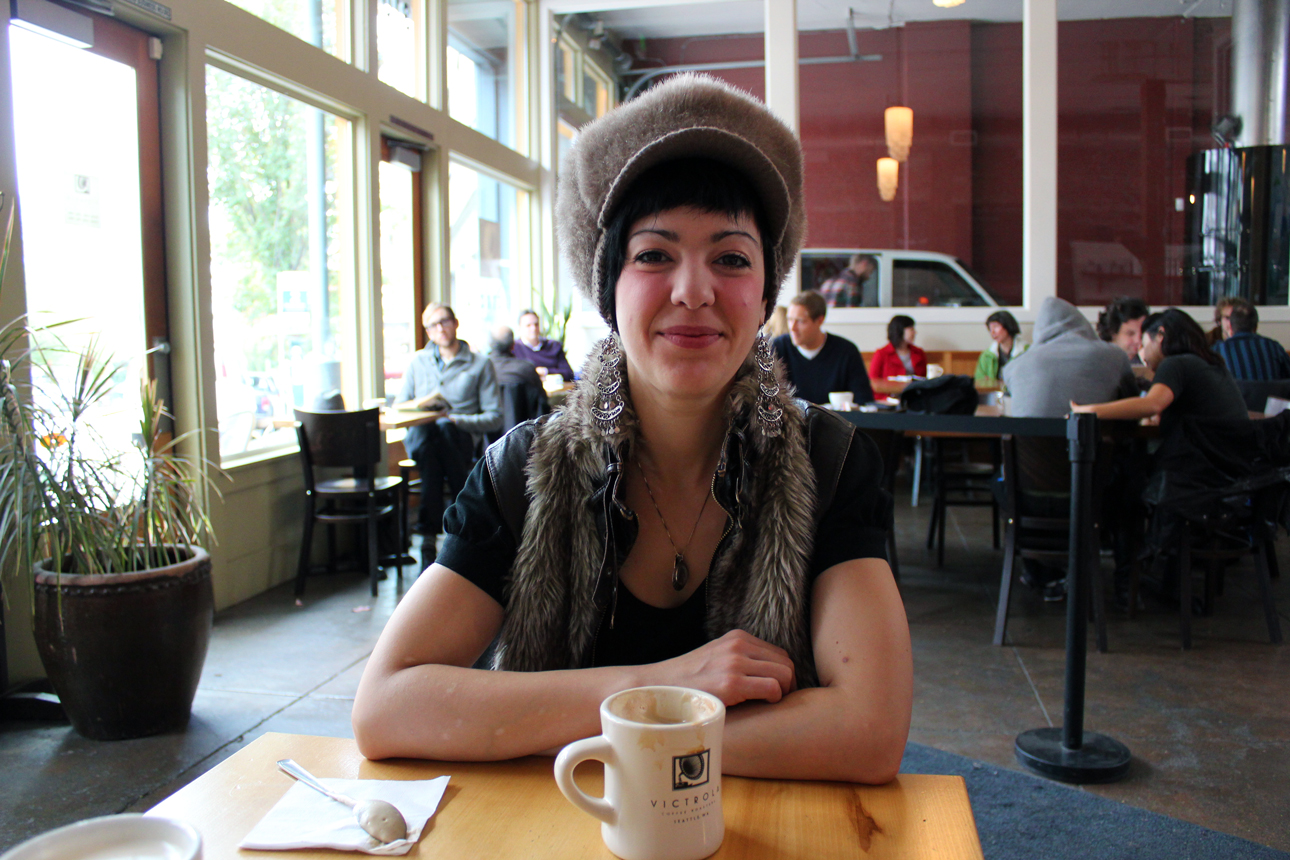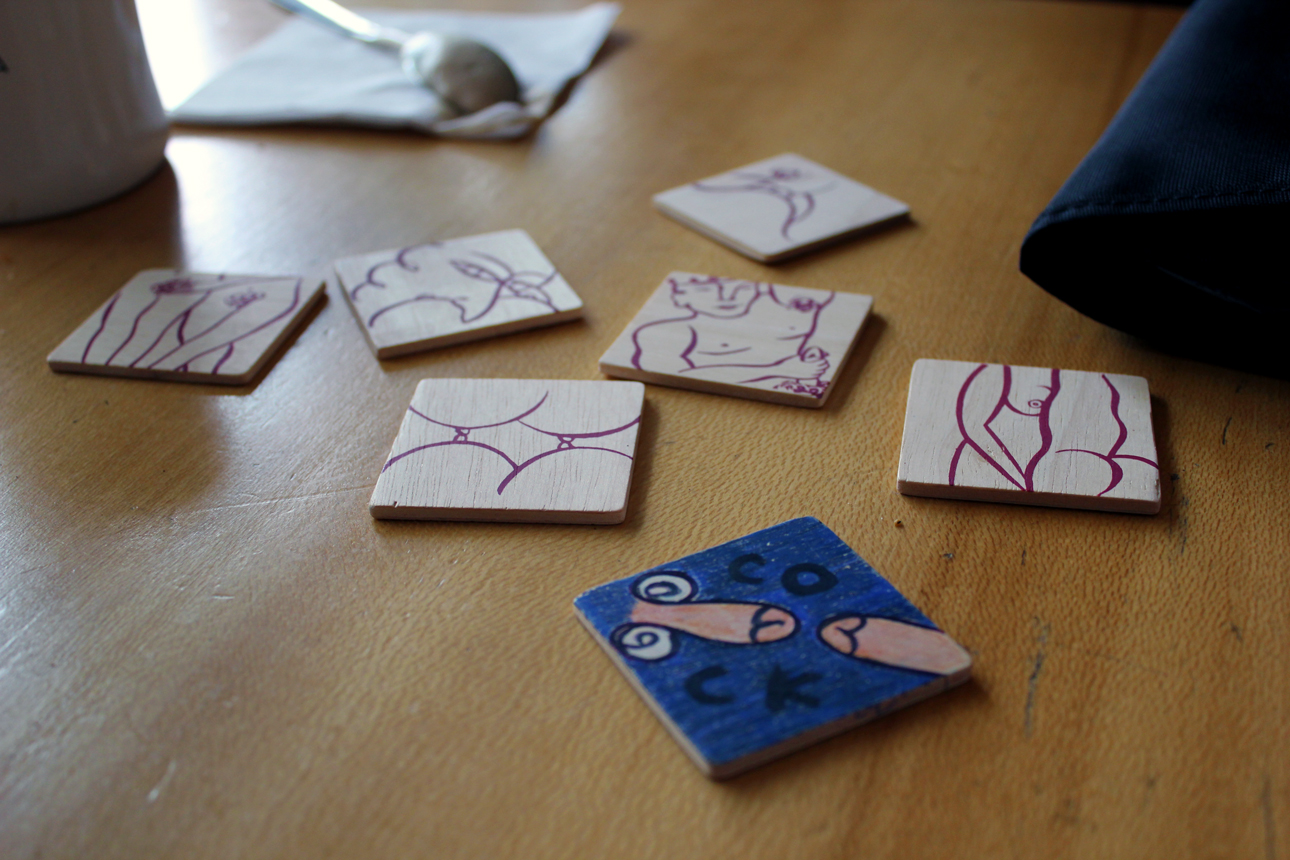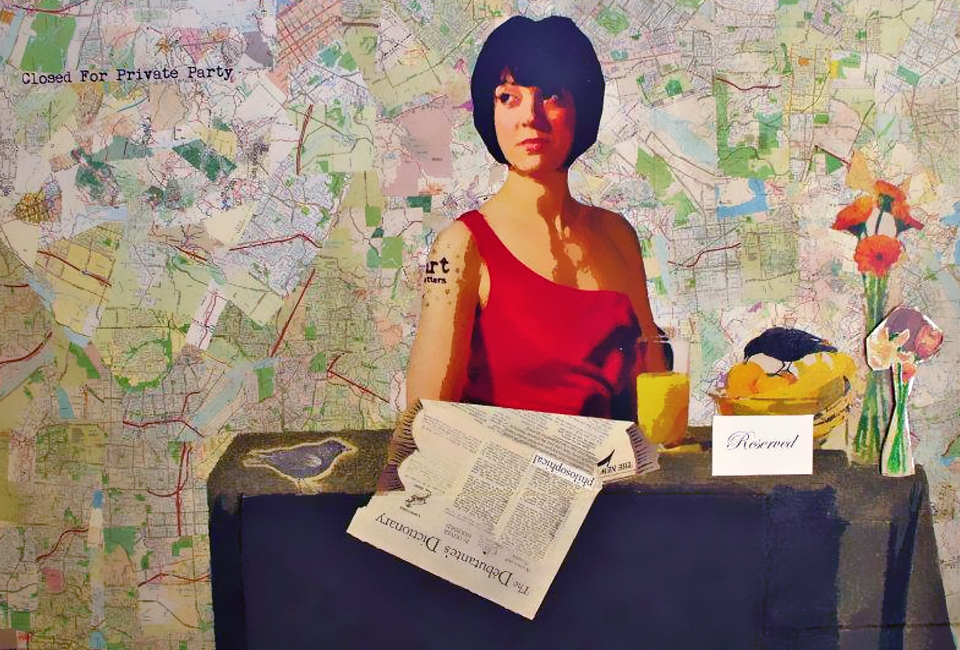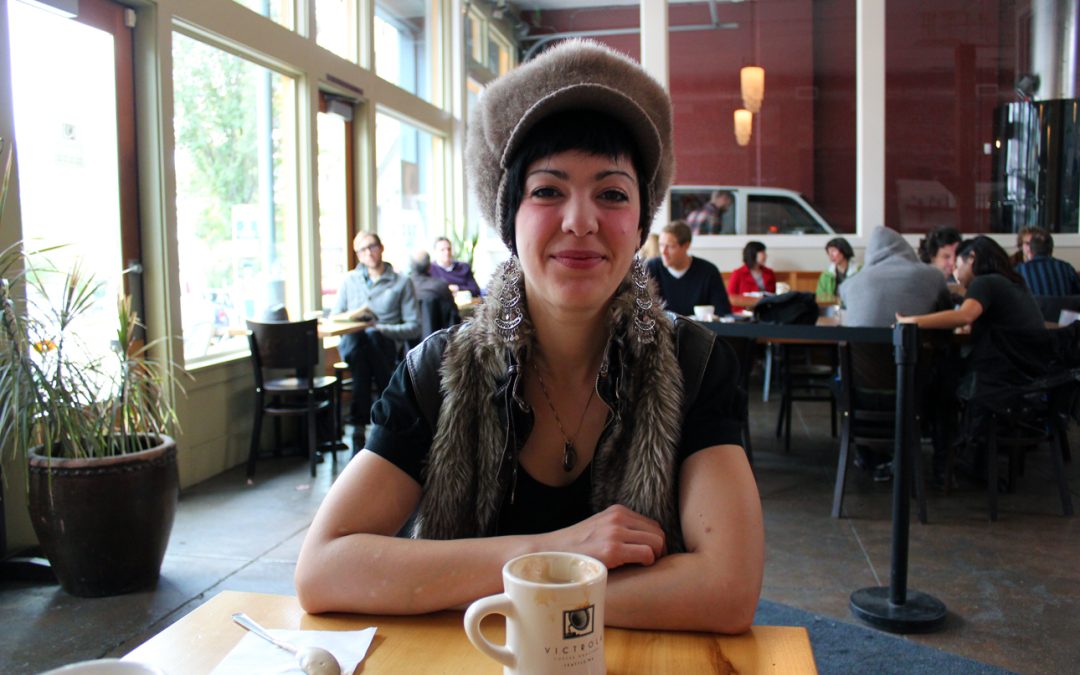
It was a chilly morning when Lauren and I met for coffee at the Victrola on Pike. Fall weather had finally arrived in Seattle, wrapping the sky in her cool, grey cloak. Lauren’s bright, sunny smile, however, beams spring warmth wherever it shines. While we stand in line to order, the barista compliments her on her knitted hat, making her smile even wider.
Lauren Bishop, 31, is a five year resident of Seattle, hailing from Ohio via a short stint in Colorado.
“I didn’t have enough money to make it all the way to Seattle,” she jokes, “so I had to stop half way.”
Lauren is also an up and coming mixed-media artist, and a relative newcomer to the visual art world. Her art is a reaction to her environment, she says. It’s constructed, painted, and cut from a variety of sources; manufactured, old, new, and found. Like other artists, her work is her own personal narrative, but she also finds a sense of delight in incorporating the items, and the narrative, of others.
“Found materials are other people’s treasures,” she says. “They’re traces of their existence.”
Some of her favorite sources for materials include show flyers, back page Stranger ads, dumpsters, and band practice studios. She’s even used wood found in alleyways, although she suggests that you “make sure it’s not peed on” if you want to use it. She describes what she creates as a visual commentary that reflects her views on pop culture, personal experience, and the world at large.

While we’re talking, she shows me some of the items she’s recently collected. Her favorites are a set of handmade dominos depicting different scenes of lovemaking, sort of a board game Kama sutra, that she’s in the process of coloring in. She describes them as “pervy”, and admits that she’s incorporated similar images into some of her work, telling me that “pervy things are part of Seattle culture.”
One well received piece that she’d made sold at a show a Babeland. It was a collage she’d made of hundreds of small clippings from old porn magazines. It was well received by everyone except her mother, she admits, who worried that it would hurt her future chances in the professional world. Lauren remains undaunted.
“It’s hard work, living the dream,” she tells me, “but if people affix a value to my work that’s not monetary, that’s important to me, too.”
“It’s hard work, living the dream, but if people affix a value to my work that’s not monetary, that’s important to me, too.”
Lauren’s work includes a mixed-media self portrait, painted onto a collage of pieces of street maps. Lauren’s brush work shows a somewhat Impressionist, almost Luminist style, with clear attention to the interplay of light and shadow. She shows herself with an almost wistful gaze, peering up and away from the view as if she’s lost in a melancholy thought. The hodgepodge street maps background creates a sort of fantasy world, full of surprises, where the path start and stop and random. While not truly outsider art, it’s definitely very reminiscent of it.
Even after the years Lauren has spent creating art, she still finds herself developing her voice.
“It’s a constant process,” she says. “My intention is to bring unique purpose to unexpected items and implore my audience to consider art in the everyday, every day. It’s what makes my art my art.”

Our conversation veers briefly toward the recent controversy surrounding the exhibition of Andres Serrano’s Piss Christ at the Edward Tyler Nahem gallery in New York. A photo of plastic crucifix submerged in a glass of the artist’s urine, the work has garnered much controversy since it was first shown in 1987. Conservative and Christian leaders have again been falling all over themselves in an attempt to loudly condemn the piece. Catholic League president Bill Donohue even responded with a video displaying his own piece, a bobble head President Obama in a jar with fake feces. Despite the controversy, however, the artist’s work still continues to be exhibited.
“I feel luck to have the opportunity to do it,” she says, of her privilege to live in a time and place where her art is allowed. “I see the immense injustice,” referring to places where artistic censorship still runs rampant,”but I don’t know how to vocalize it.”
While Lauren’s work is not currently on public display, she invites people to visit her Facebook page for updates. She hopes to find someone to help her create a website as well.
“I’d be willing to make an art trade for it,” she says, smiling.
[wc_spacing size=”40px”]
[wc_divider style=”solid” line=”single” margin_top=”” margin_bottom=””]


You must be logged in to post a comment.